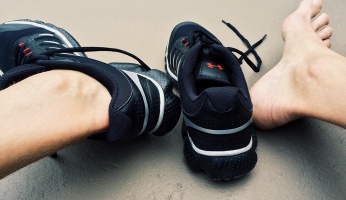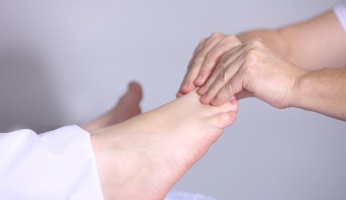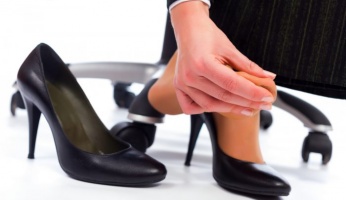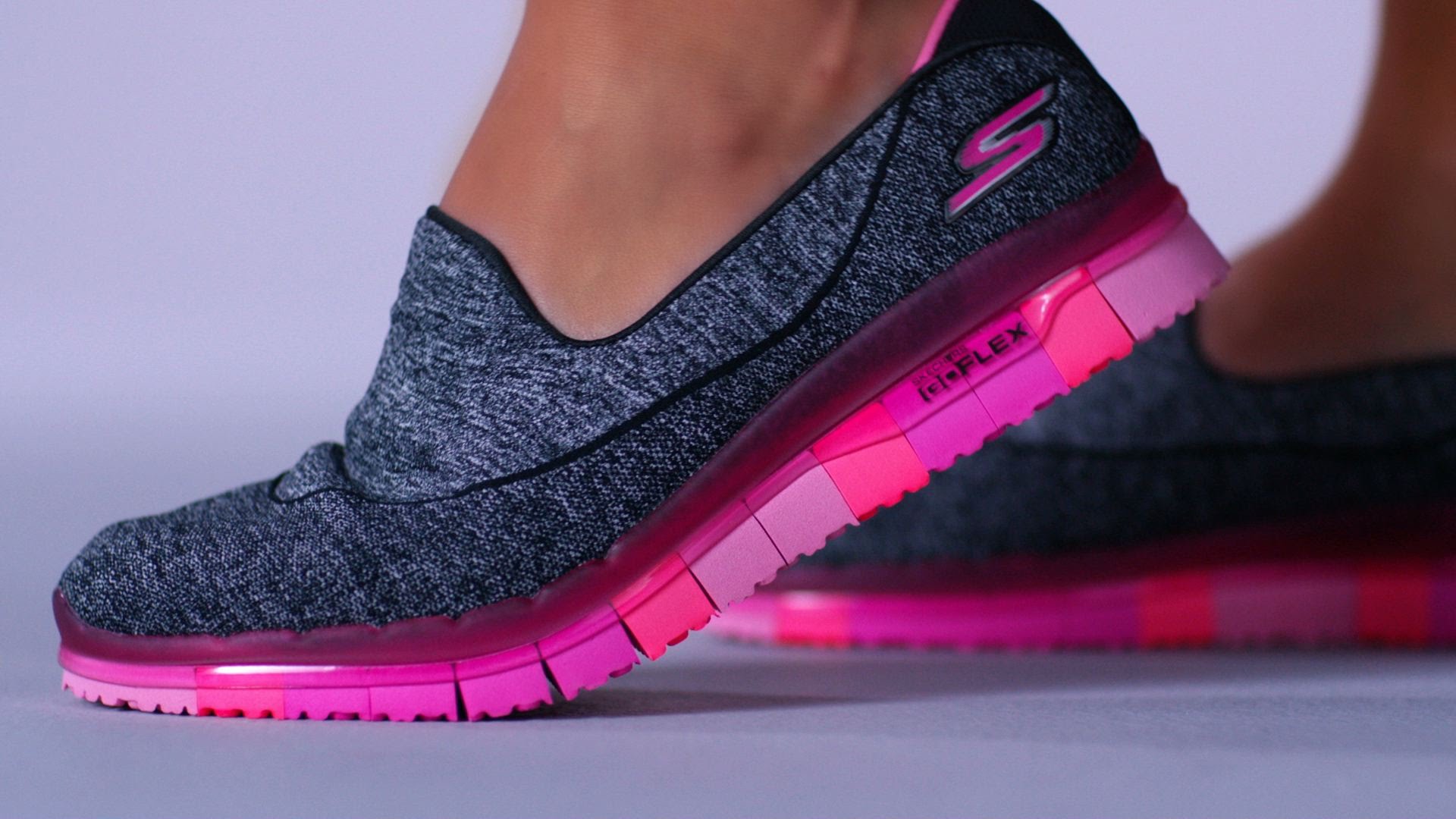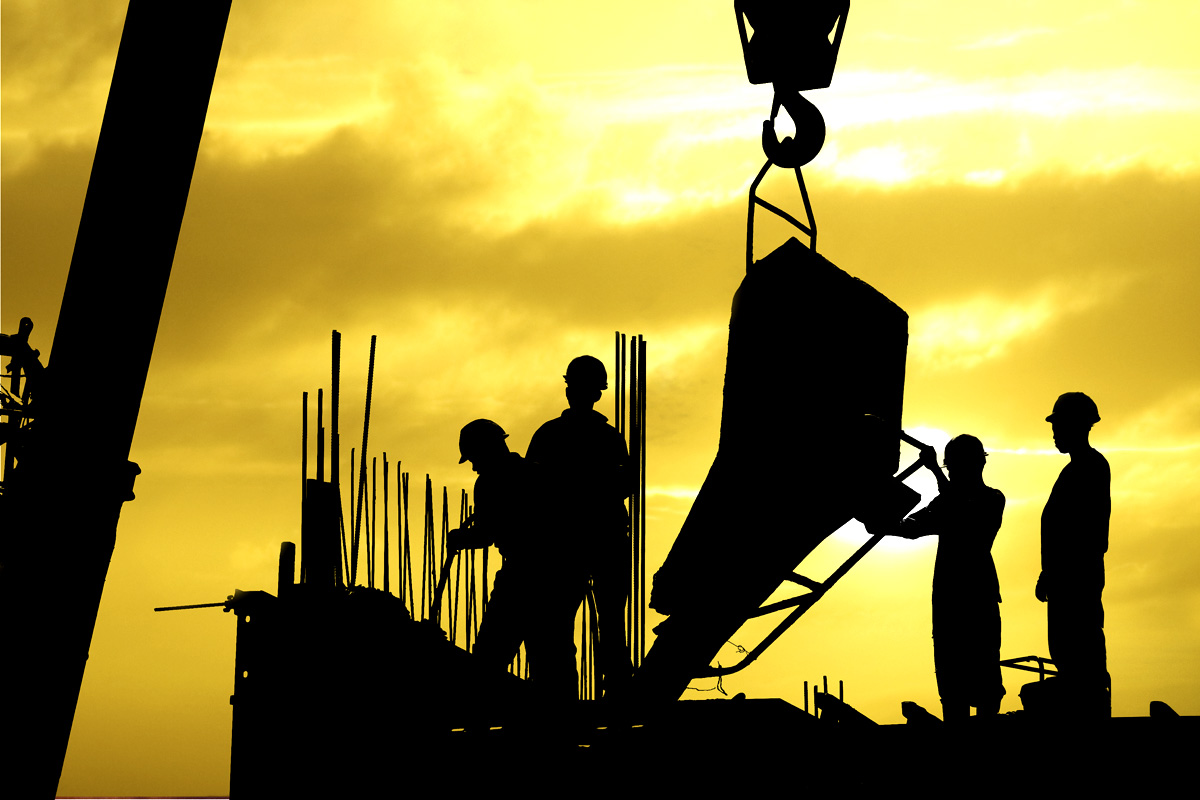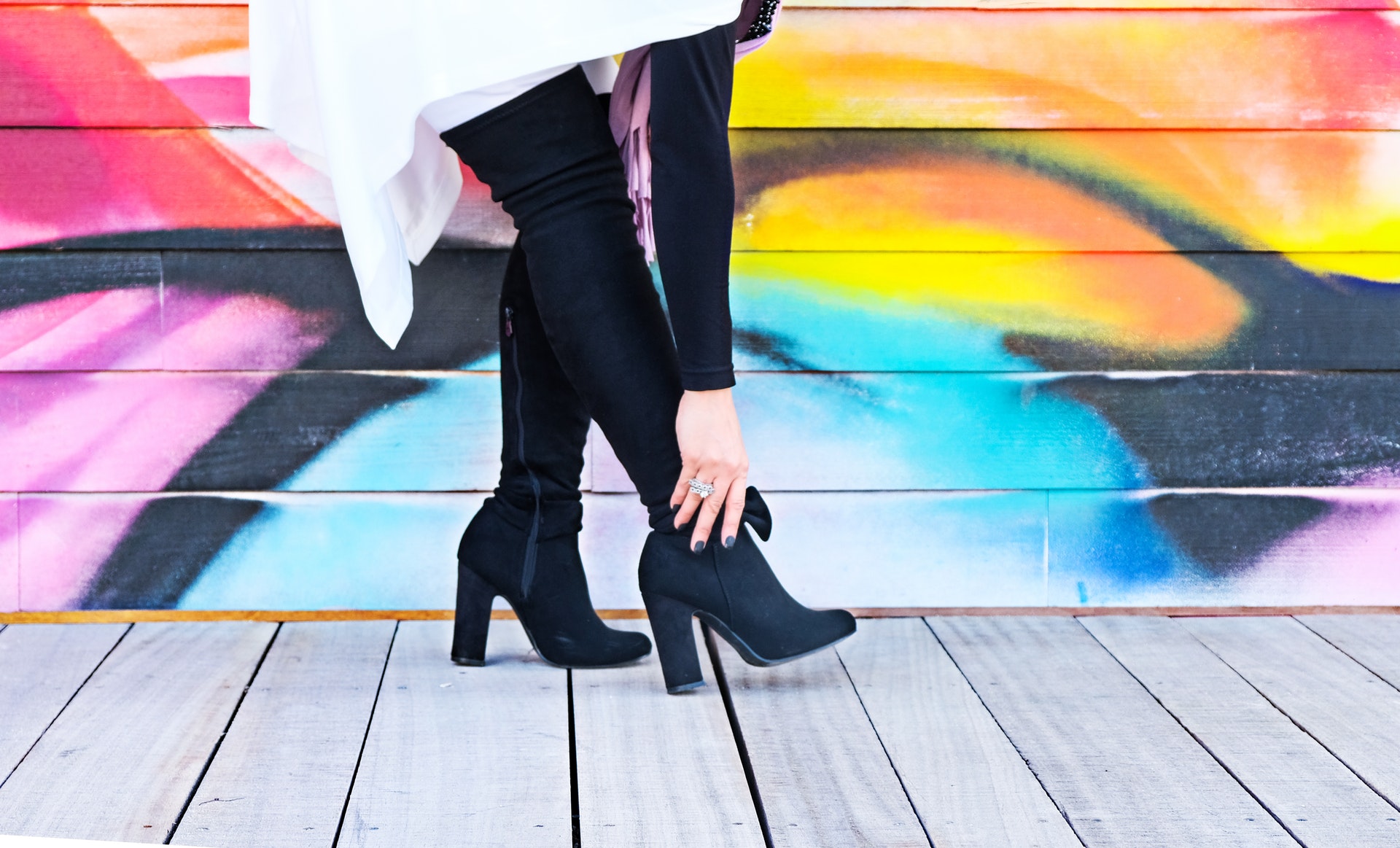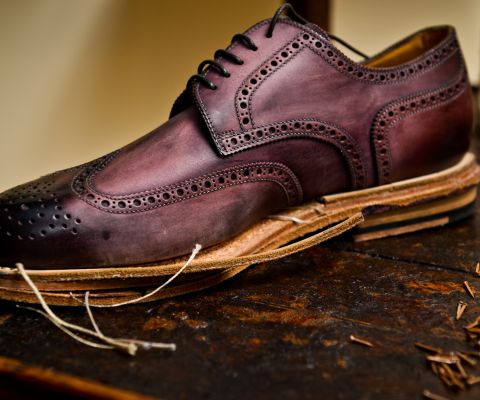What Causes Flat Feet and What to Do if you Suffer from it
 What Causes Flat Feet and What to Do if you Suffer from it www.walkjogrun.net
What Causes Flat Feet and What to Do if you Suffer from it www.walkjogrun.net It’s one of those things we’ve probably all heard (or overheard) at one point. “He/she has really flat feet.” It’s kind of a strange statement when you break it down really. We all have flat feet, to a degree — anything other than flat or relatively flat feet would be considered a crazy deformity. But the point is what do people mean when they say “flat feet”?
Once we’ve established a working definition we’ll move on to causes, and then what exactly to do about it if you yourself suffer from it.
Defined
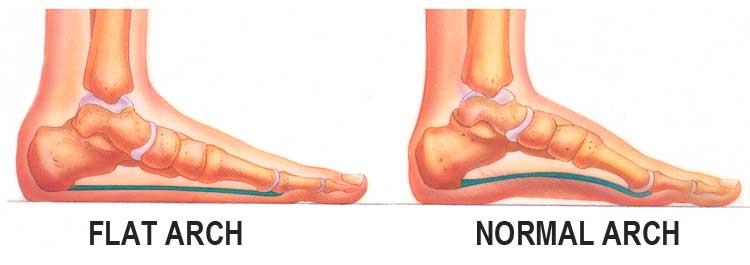
According to the Mayo Clinic flat feet or fallen arches (or use the scientific name pes planus): is a postural deformity in which the arches of the foot collapse or tilt downward, with the entire sole of the foot coming contact with the ground. It’s when the natural curve you have on the arch of your foot has deteriorated and this has led to a fundamental change in your foot’s posture.
What causes flat feet?
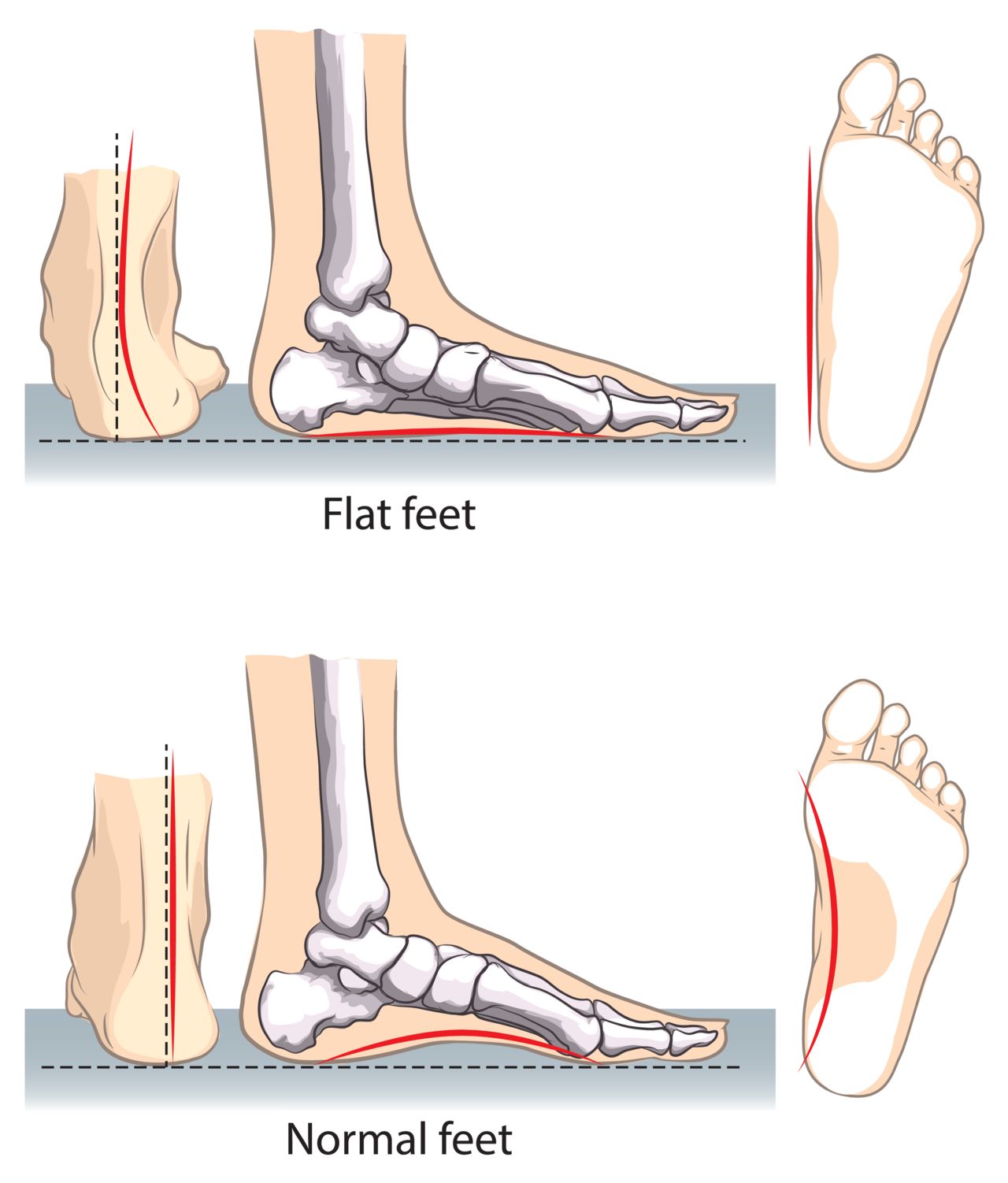
There is no single cause of flat feet, but rather a range of factors that are thought to contribute to fallen arches. Again using the Mayo Clinic as our point of reference, we can say the following: babies and young children often have flat feet as they haven’t fully developed yet (the tissue underneath the feet tends to firm up with age and create the shock-absorbing apparatus known as the arch)
When it comes to teens and adults the causal factors identified were:
- Family history – Many experts say fallen arches come from your heredity and tend to run from one generation to the next.
- Weak arch – The arch of the foot may be okay when no weight is placed on it, for example, while a person is sitting at their desk. But as soon as they stand up the full extent of their arch issues becomes apparent. This can often be down to simple lack of muscle and conditioning.
- Injury – there are a number of different injuries which can contribute to arch collapse.
- Arthritis – Arthritis, being degenerative in the way that it is, can expedite the process of your arches giving way under pressure
- Tibialis posterior (ruptured tendon)
- Pregnancy – fundamentally changes the body and can place different kinds of strain on the body
- Nervous system or muscle related diseases – examples of this would be cerebral palsy, muscular dystrophy, or spina bifida.
- Diabetes – adds a lot of risk to your feet for various other conditions developing, flat feet is one of them.
- Age and wear and tear – If you think about the beating your feet take course of years it’s not hard to imagine how your arches could wear down. Running, jumping, kicking, walking and stomping all add up to some worn out anatomy — and the result of this can be fallen arches. Tendonitis is often another contributing factor, which, side by side with wear and tear can lead to flat feet.
Okay, so now we’ve understood exactly what flat feet are and some common factors that cause them. But if you’ve fallen into the group that has to deal with this issue you’re probably wondering what exactly to do.
What to do about flat feet
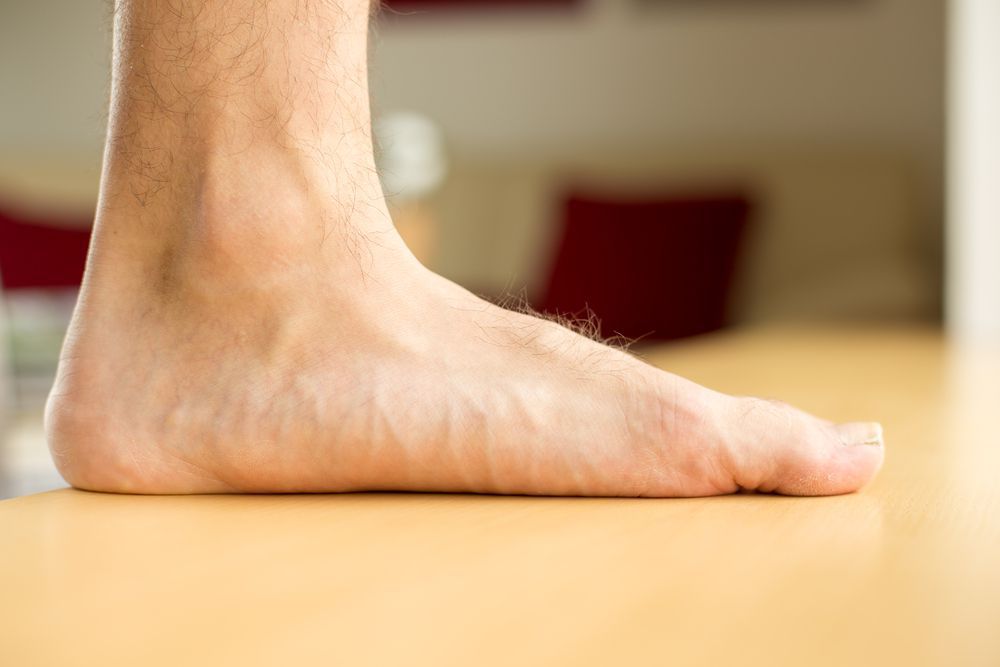
There are a lot of things that can be done about flat feet, but we should say that the best policy is talk to a doctor and get a proper diagnosis and review of treatment options. But with that done (or perhaps no if you like to get DIY) there are a few simple things you can do at home to help alleviate problems associated with flat feet. We’ll focus on three
- Get some more supportive shoes. It doesn’t really matter to what degree your feet are flat, get a pair of shoes with some proper support and you’re quite likely to see some benefit. The benefit may be slight or it might be a complete solution. What you want is a comfortable pair of walking or athletics shoes that have substantial arch support, a spacious toe box, sturdy heel counter and a flexible sole. Putting some support in place for your arches will decrease tension in the Tibial and Achilles tendons.
- Invest in some custom made inserts. Another way to try to prop your feet in a more comfortable position is to get some custom made orthotics. Orthotics are plastic or gel shoe inserts that support the arch of your foot and are meant to promote better biomechanics while you are in motion. By providing cushioning and working double duty as shock absorbers inserts are a great tool to fend off the problems that tend to crop up with small feet (particularly in knees, hips and ankles).
- Lose weight some weight — This is good advice overall if you struggle with being overweight (especially being obese), but reducing the load your feet have to carry around can substantially ease your flat foot related ills. The bones, ligaments and tendons of your feet no longer have as much torque put on them and additionally blood flow is probably increased. Losing weight it’s a magic cure for rigid flat feet, but dropping a few pounds can substantially affect it. There is a plethora of weight loss info out there…For most women, eating less than 2,000 calories daily will generally lead to some weight loss even in the absence of heavy exercise. Conversely most men need to get under 2,200 calories to see much weightloss on a weekly basis.
Flat feet are kind of a drag, but they needn’t slow you down too much. Once you understand the problem and the implication of said problem — it’s up to you to fix it. Our list only begins to crack the surface of what you can do. There are a lot of tools that can help you, all that’s needed is a little bit of drive — and of course if ever in doubt consult with your doctor.





